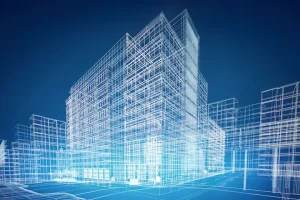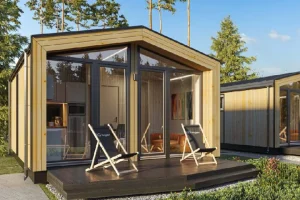Light Steel Structures are one of the new technologies in the construction industry, which are considered a suitable alternative to traditional structures with features such as low weight, high speed of implementation, high earthquake resistance and industrial implementation capability. Due to their precise design and use of galvanized steel profiles, these types of structures increase construction efficiency in addition to reducing maintenance costs. The implementation of these structures includes various stages, including design, production of components, assembly and installation, and compliance with engineering principles at each stage has a direct impact on the final quality of the project. In addition, the costs of implementing a light steel structure are affected by several factors such as the type of material, structural design, the degree of prefabrication of components and transportation costs. In this article, we intend to introduce and review light steel structures.
What is a light steel structure?
Lightweight Steel Structure is a type of structural system made of thin-walled, high-strength stainless or galvanized steel. This type of structure is very popular in construction, industrial and commercial projects due to its low weight, high strength and high speed of implementation. The main components of this structure include cold or hot-rolled steel profiles, bolted connections and reinforcement plates, which increase its durability and stability. One of the key features of lightweight steel structures is their flexible design and rapid implementation, which reduces construction costs and shortens the operating time. In addition, these structures have good resistance to earthquakes, corrosion and harsh weather conditions and are considered a suitable option for modern projects.
The use of light steel structures in construction and various industries is expanding day by day due to advantages such as reducing the overall weight of the building, increasing the speed of installation, recyclability and environmental compatibility. These types of structures are especially used in the construction of prefabricated buildings, industrial sheds, bridges, space structures and even tall towers. Also, LSF (Light Steel Framing) systems, which are a subset of light steel structures, are widely used in the construction of prefabricated houses and villas.
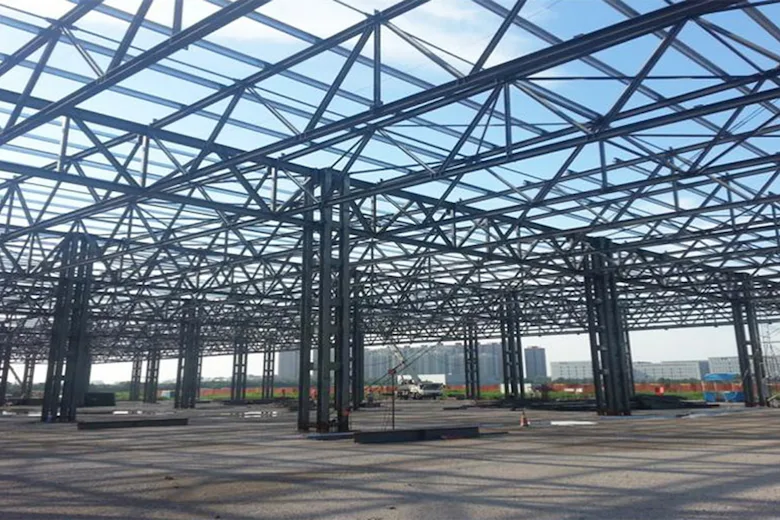
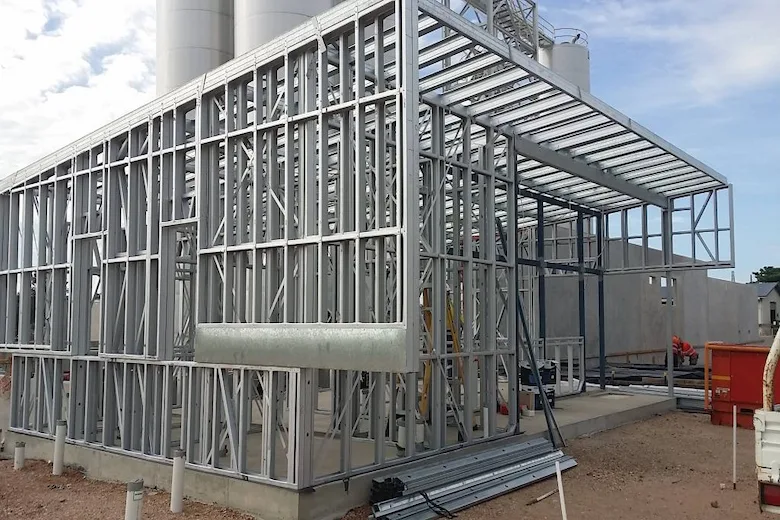
Types of light steel structure
Light steel structures are classified into various categories depending on the type of design, connection method, and various applications. In the following, we are going to introduce its types. Stay with us.
1. Light Steel Framing System (LSF)
The Light Steel Frame (LSF) system is one of the most widely used types of light steel structures, mainly used in the construction of prefabricated houses, villas and low-rise buildings. This system is made of cold-rolled galvanized steel profiles that have a very low weight but offer high resistance to compressive and seismic loads. One of the key advantages of this system is fast implementation and reduced construction costs, as the components are prefabricated and assembled on site. In addition, the LSF system is an environmentally friendly option due to the reduction of construction waste and the recyclability of steel.
Ohaddeco Group specializes in the design and implementation of various LSF structures and their internal coatings such as wooden acoustic wall covering and wooden thermowall. Dear friends, you can contact us through the communication bridges for more information and free consultation.
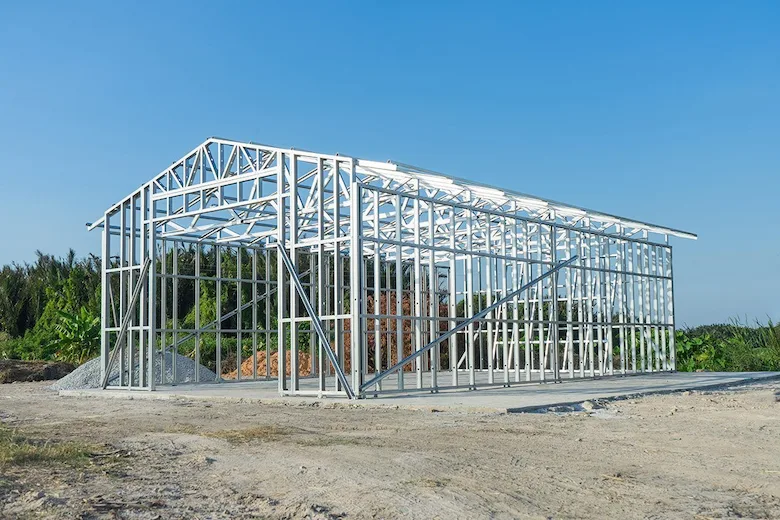
2. Truss Steel Structures
Steel lattice structures or trusses are another common type of lightweight steel structure used in the construction of industrial roofs, sports halls, bridges and light sheds. This type of structure is made up of a set of steel bars connected in a triangular shape, which increases resistance to dynamic and static loads. The truss design allows the structure to withstand the greatest amount of load with the least amount of materials. Also, this type of structure has high flexibility in terms of aesthetics in architectural design and allows the implementation of large spans without the need for intermediate columns.

3. Bolted Steel Frame System
In this system, light steel parts are connected to each other through bolted connections, which speeds up the installation process and increases the accuracy of execution. This type of structure is widely used in construction projects that require short execution times, such as office, commercial and industrial buildings. One of the main advantages of this system is the possibility of disassembling and reassembling the structure, which reduces the costs of rebuilding or moving the structure. Also, using bolts instead of welding improves the quality of the connections and increases resistance to vibrations and earthquakes.
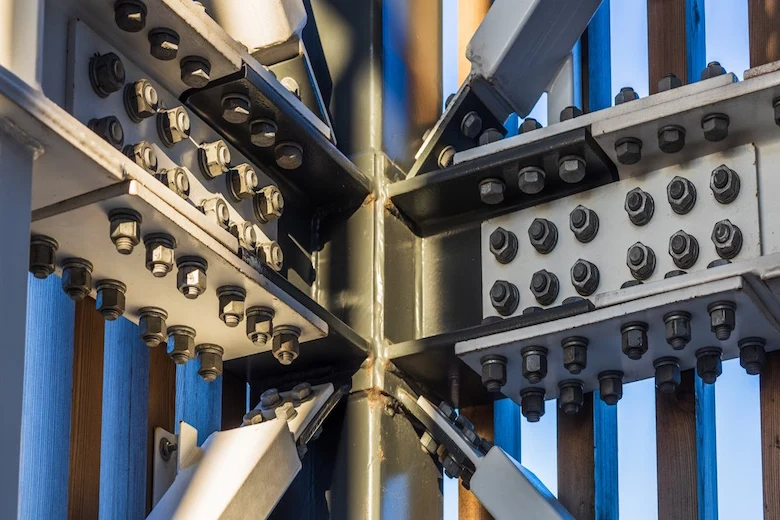
4. Tubular Steel Structure
Tubular steel structures are one of the most modern methods of constructing light steel structures, which are especially used in high-rise tower projects, oil platforms, telecommunications masts and aerospace structures. This type of structure is made up of hollow steel tubes that are connected in a cross or lattice pattern. The tubular structure allows the weight of the structure to be reduced while at the same time providing high resistance to wind, earthquake and lateral loads. In addition, the aerodynamic design of this type of structure reduces resistance to air flow and increases its stability in adverse environmental conditions.

Advantages of light steel structure compared to traditional structures
The use of lightweight steel structures (LSS) in the construction industry is increasing significantly, as these types of structures offer better performance in various fields compared to traditional methods. Below, we examine five of the most important advantages of these structures.
1. Reducing the overall weight of the structure and increasing earthquake resistance
One of the most important advantages of lightweight steel structures over traditional structures (concrete and brick) is their lower weight. The low weight of these types of structures not only reduces the pressure on the foundation, but also reduces the impact of earthquake forces. In a traditional structure, the high mass causes severe lateral forces to enter the building during an earthquake, but in lightweight steel structures, due to their low weight and high flexibility, these forces are better absorbed and the possibility of destruction is reduced. This feature is especially important in earthquake-prone areas.
2. Increasing execution speed and reducing construction time
Another key advantage of light steel structures is their high speed of implementation compared to traditional structures. In traditional methods, the construction process includes multiple steps such as concrete pouring, bricklaying and plastering, which are time-consuming. However, in light steel structures, the components are manufactured in a prefabricated form and assembled on site, which helps reduce the project implementation time. This feature not only reduces labor costs, but also allows for faster utilization of the building.
3. Reducing construction and maintenance costs
Although the initial cost of some types of lightweight steel structures may be higher than traditional methods, in the long run they provide significant savings in construction and maintenance costs. Since these structures require less labor and their construction process is faster, the overall project costs are reduced. In addition, the galvanized and stainless steel used in these types of structures has a long lifespan and does not require constant repairs and maintenance, while traditional structures are subject to cracking, erosion and the need for periodic reconstruction.
4. Possibility of flexible design and implementation of large openings
Light steel structures offer great flexibility in design due to their structural features. While in traditional buildings, there are numerous limitations to creating open spaces and large openings, in light steel structures, structures with wide openings can be implemented without the need for intermediate columns by using steel sections and bolted connections. This capability is very useful in the design of commercial, industrial and sports spaces and allows the creation of modern and unique architectures.
5. Environmental compatibility and reduction of construction waste
Light steel structures are considered one of the most sustainable construction methods, as steel is a completely recyclable material and can be recycled over and over again without loss of quality. In contrast, in traditional methods, large volumes of materials such as concrete, bricks and plaster are discarded as construction waste, which has a devastating environmental impact. In addition, the production of steel parts in the factory reduces pollution and makes optimal use of resources, while in traditional methods, the production of materials and the implementation of buildings are usually associated with greater pollution and higher energy consumption.
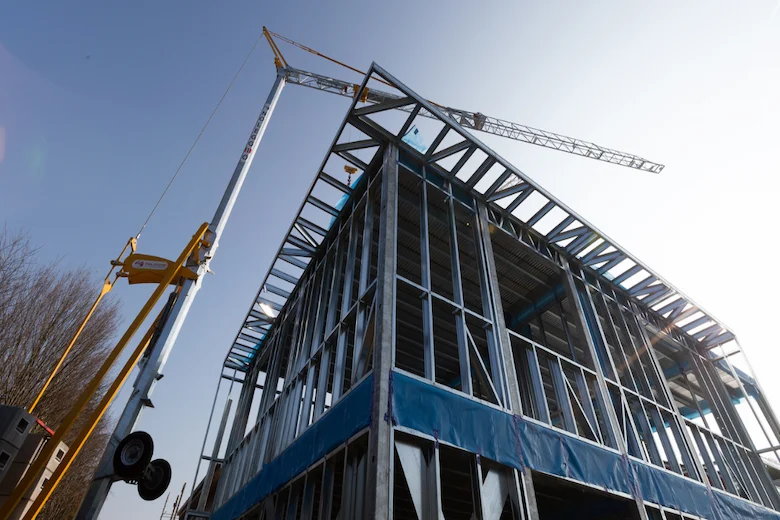
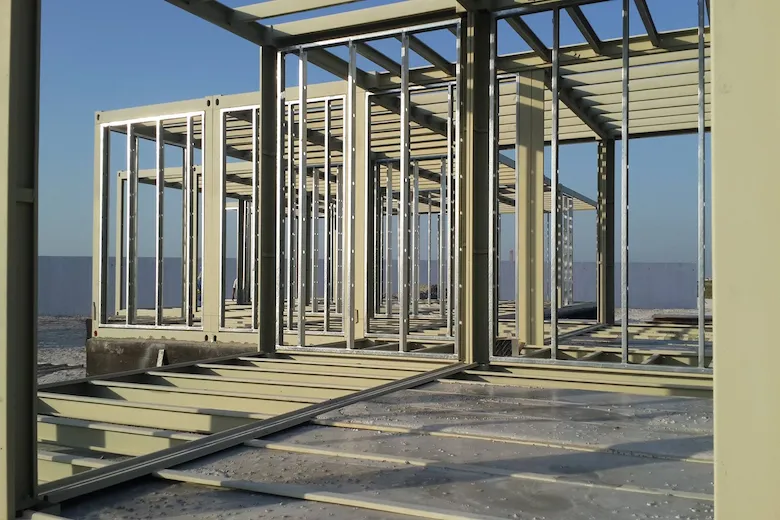
Factors affecting the cost of light steel structures
- Steel type and quality
- Structure design and complexity
- Extent of prefabrication
- Transportation and installation costs
- Project location
- Raw material price fluctuations
- Labor and equipment costs
- Need for additional reinforcement
- Engineering standards and requirements
- Economic policies and exchange rates
Steps to implement a lightweight steel structure (LSS) step by step
1. Structural design and engineering
Before the start of construction, the design and engineering of the light steel structure is carried out. In this stage, architectural and structural drawings are prepared using advanced software such as AutoCAD and Tekla Structures. Engineers analyze the loading structure, force distribution and technical details to ensure that the structure is designed in accordance with the required safety and strength standards. In addition, in this stage, the type of steel profiles, material thickness and type of connections are determined. The correct implementation of this stage plays an important role in reducing costs and increasing project productivity.
2. Preparing the project site and implementing the foundation
After the design is completed, the project site preparation operation begins. At this stage, the ground of the construction site is examined and, if necessary, leveled and prepared. Then, the foundation is designed and implemented according to the type of structure. In light steel structures, strip foundations or point foundations are usually used, which do not require a large volume of concrete. The correct implementation of the foundation has a great impact on the stability and durability of the structure, which is why this stage must be carried out carefully and under the supervision of engineers.
3. Production and cutting of steel parts
After the foundation is prepared, it is time to produce and cut the steel parts. This step is usually done in the factory to ensure high dimensional accuracy and desired quality. Steel profiles are cut, punched and drilled according to the designed drawings. In some projects, connections are pre-installed on the parts to reduce the need for welding and additional operations during on-site assembly. Industrial production of parts increases the speed of execution and reduces construction waste.
4. Assembly and installation of the structural skeleton
At this stage, lightweight steel components are transported to the project site and installation begins. The components are designed as modular components, so they are connected to each other using bolts or mechanical connections. This method reduces execution time and increases installation accuracy. During assembly, the alignment of the structure, the strength of the connections, and compliance with engineering standards are checked. If necessary, supervisory engineers make the necessary corrections and ensure the integrity of the structure.
5. Implementation of wall and ceiling coverings
After the skeleton installation is completed, the stage of implementing wall and roof coverings begins. In light steel structures, sandwich panels, galvanized sheets or lightweight materials such as cement board are usually used for walls. In addition to reducing the weight of the structure, these types of coverings also provide appropriate thermal and acoustic insulation. The roof of the structure is also selected and implemented based on the type of use and climatic conditions. At this stage, the necessary measures for insulation and insulation against moisture and cold are taken into account. Note that today, wooden acoustic wall coverings and wooden thermowalls are most widely used in this field due to their sound and heat insulation properties.
6. Implementation of facilities and final completion of the structure
In the last stage, electrical, mechanical and ventilation systems are installed. Flooring, wall coverings and final painting are also carried out. Depending on the type of project, features such as doors and windows, intelligent systems and special equipment are added. Finally, a general inspection of the structure is carried out and, if approved by the engineers, the project is put into operation. The correct implementation of this stage will have a significant impact on increasing the lifespan and efficiency of the structure.
Final Words
As you can see, in this article, we have thoroughly introduced and reviewed the lightweight steel structure. We have learned that lightweight steel structure is one of the best options for constructing residential, commercial and industrial buildings due to its significant advantages such as reducing the weight of the structure, high speed of implementation, earthquake resistance and optimization of energy consumption. The implementation process of these structures includes precise and planned steps that include from initial design to completion and operation. Also, the costs related to this type of structure are affected by various factors, the correct management of which can lead to reducing final costs and increasing project efficiency. Thank you for your support until the end of this article, we hope that the information provided has been useful to you.
Ohaddeco Group specializes in the design and construction of various lightweight steel structures such as kit house, LSF structure, SRC structures and interior coatings such as wooden acoustic wall covering, wooden thermowall, thermowood flooring, etc. Dear friends, you can contact us through communication bridges for more information and free consultation.

